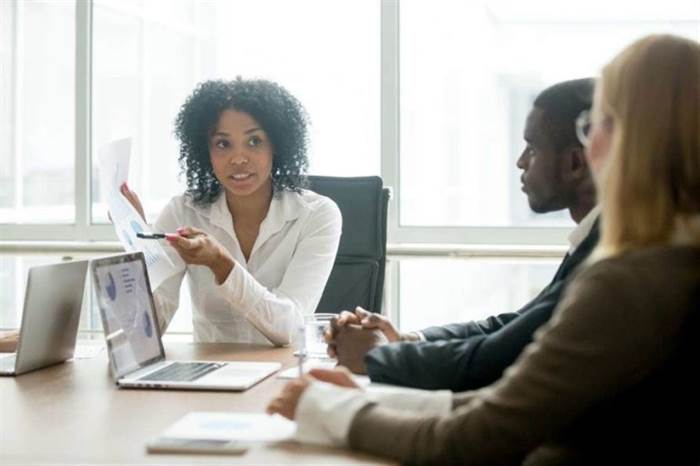What is a progressive web app? Progressive web apps MDN
Once it is saved, the user can visit the progressive web app any time, even when they are offline , offering a responsive and fast experience. The following are the points to consider before deciding whether to go in for Progressive Web Apps. Built with modern web technologies like HTML5, CSS3, and JavaScript, Progressive Web Apps is a Google’s attempt to deliver users a native app-like experience. Let’s get familiar with how they are different from native apps. Native Apps are apps developed for a specific mobile operating system, such as Android or iOS.

However, media coverage is often a little bit shallow and focused on finding simple answers, like are PWA capabilities better or worse than those of native apps, for example. Meanwhile, we shouldn’t just compare progressive web apps’ features to their native app competitors. They can bring benefits even to a company that already has an app.
Progressive web apps overview
Each of these frameworks allows you to develop and compile your app separately to mobile, desktop, or to the web, while still only writing a single codebase. But, for companies starting from scratch or transitioning away from a native app, building up your web presence from scratch might be less enticing, and indeed disastrous. Any good SEO consultant will tell you that it takes time, effort, and, indeed, sometimes money and advertising to maintain a competitive search presence nowadays. However, if you’ve run into Google Maps Go or Twitter Lite and installed them — you also have PWA from Google Play. Regardless of where you fetch such an app, it’s just one app that works on all platforms that support mobile web.
This can result in faster loading times and a smoother user experience. First, they are built using standard web technologies like HTML, CSS, and JavaScript, which are optimized for efficient performance and minimal resource usage. This means that PWAs can run smoothly even on low-end devices and slow internet connections. PWAs also use service workers, which run in a separate thread from the main page, and have limited access to user data.
The state of PWA
Though this issue will predictably get solved in the future, for some companies today, it may be a cause of client complaints. PWAs depend on HTTP to offer information safety and diminish the risk of security matters, as such a protocol permits to prevent content tampering and snooping. Similarly, the web applications take advantage of Web Bluetooth tech that comprises some security competencies. Why are these notifications particularly proficient when it comes to PWA? The users permit their progressive apps to send notifications, which considerably escalates the opportunities to promote services or products. The web app manifest is vital for producing a native-like applications’ experience.
- The development of Firefox OS ended in 2016, and the project was completely discontinued in 2017, although a fork of Firefox OS was used as the basis of KaiOS, a feature phone platform.
- These apps are built according to progressive enhancement principles.
- Since this is a requirement made by a major search engine on the market, conforming to this regulation is the best option for your business.
- The famous E-commerce company Alibaba witnessed a four times higher engagement rate only with the ‘add to screen’ feature.
- So, once you are familiar with it, you can choose any of the two apps based on your particular needs and budget.
With drop-off charges for native apps being high, progressive web apps are gaining popularity. That’s not to say that native apps always lose in this mobile app vs PWA comparison. However, shareability in native applications is up to app developers, and PWAs get this feature out of the box. One of the major drawbacks related to native apps is regarding the distribution friction.
When to build progressive web apps
We hope this eBook has provided you with a comprehensive understanding of PWAs and their potential impact on your business. Whether you are an eCommerce professional or a developer, we encourage you to explore the world of progressive web apps and analyze it in the context of your use case and business. If you need a hand with that, don’t hesitate to reach https://www.globalcloudteam.com/ out to discuss PWA development with our experts. All those features make PWAs a powerful solution to the challenges of the mobile world, and in fact, their history is paved with success stories. The examples that we’ve analyzed in this eBook highlight the positive impact of progressive applications on usage statistics and overall business performance.
PWA Cannot Do EverythingAs proficient as PWAs are compared to old-style web applications, they cannot do everything that a mobile app can do. As they are written in JavaScript, they are not as battery-efficient as the web apps written in native languages, like Swift or Kotlin. PWAs images, cache and serve text, and other content enables the app to function like efficient sites and meaningfully increases the running speed. Along with the rapid procedure, impeccable presentation is another quality that has an influence on user experience and thereby, the conversion rates. PWAs combine the competencies of mobile and website software that sanction generating an entrancing user experience.
The Wow Factors of Progressive Web Apps:
As an app owner, you’re probably asking yourself that very question. Rest assured, dear reader, we’ve thought about the matter long and hard. Our wealth of experience building both native and progressive web apps has given us valuable insight into this fractious debate.
And in other cases, mobile retailers limit apps from accessing device abilities because the developers are not paying to create the app obtainable on the platform. This reliance on the well-trodden ground of JavaScript callbacks and DOM elements means that development is significantly easier compared to building a native app. You won’t have to worry about making sure your team can handle coding for iOS and Android in parallel (plus, a server-side) since you only need to develop a single web app. Conversely, you’ll need niche engineering talent when opting for native vs progressive web apps.
I’ve heard Apple is coming forth with supporting more PWA features in Safari. What are they?
Several years ago, businesses could choose between native, hybrid, and cross-platform mobile development. Today, an additional option has emerged — progressive web apps. Self-updates are one of the outstanding features of progressive web apps that can benefit both users and developers.

The integrity of the data requires serving the website via HTTPS and installing an SSL certificate on a server. When you leverage PWA capabilities, on the other hand, everything happens instantly. The updates, deployed to a server, are available to users almost in real time.
Progressive Web Apps: A Comprehensive Guide
The chances for better distribution are, therefore, higher for PWAs. Since PWAs aren’t installed on a device or shared via Play or Apple stores, their customers are several steps closer to launching them. They don’t progressive web apps native features have to visit an app store, click the “install” button, and accept various permissions. All they need to do is to visit the website, add the app to a home screen, come back to the home screen, and open the website.
